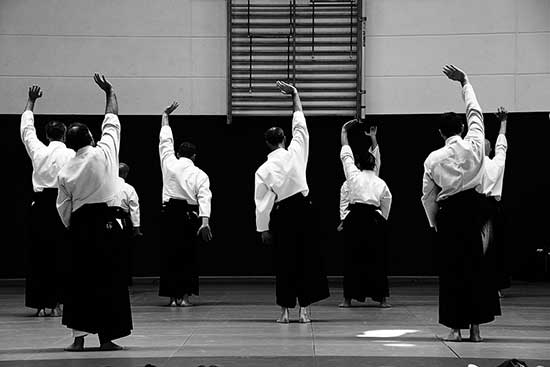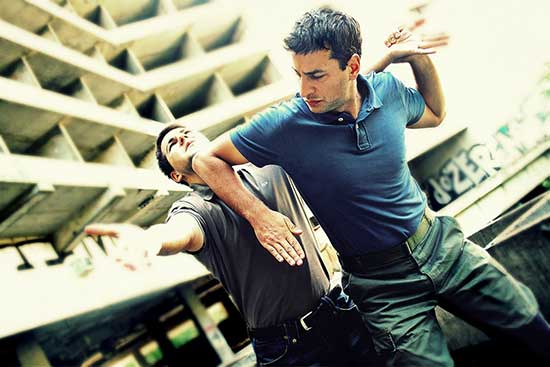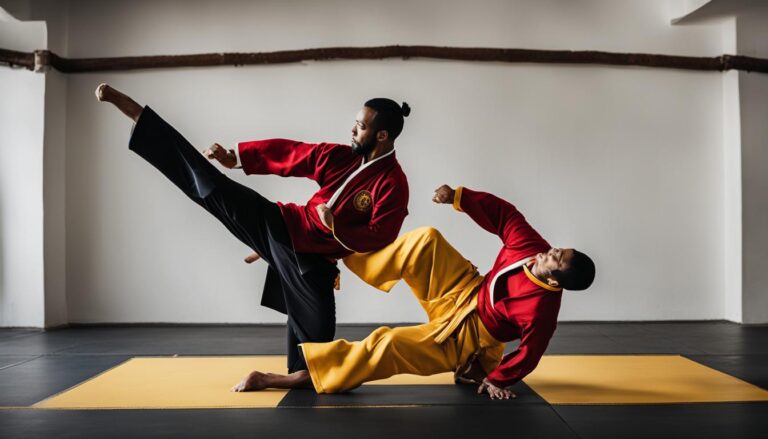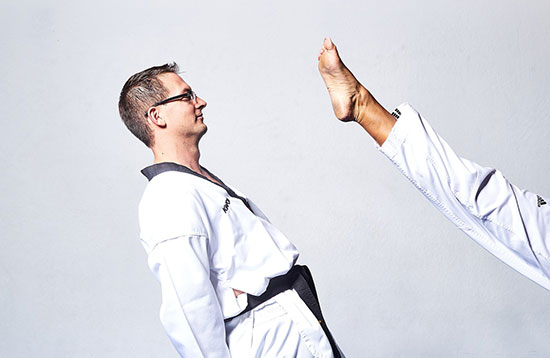Looking to improve your self-defense skills? Consider learning panantukan techniques. In this article, you’ll discover the essential strikes, footwork, defensive maneuvers, and counters that will empower you in any confrontation.
Learn how to dominate in close-quarters combat with clinching techniques, joint locks, and takedowns.
Plus, we’ll share training drills and conditioning exercises to enhance your speed, agility, and power.
Get ready to become a force to be reckoned with.
Contents
Key Takeaways
- Panantukan Techniques focus on basic strikes such as punches, elbows, and palm strikes with precision, speed, and power.
- Swift, agile, and well-coordinated footwork is crucial in executing Panantukan Techniques.
- Defensive maneuvers like the parry, slip, bob, and weave are used to block or avoid opponent’s strikes.
- Clinching and close-quarters techniques are utilized to establish dominance, minimize damage, and create opportunities for devastating strikes and takedowns.
Basic Strikes and Footwork
You should practice your basic strikes and footwork to improve your Panantukan techniques. By focusing on these fundamental aspects, you’ll lay a solid foundation for your overall skill development.
Start by honing your strikes, such as punches, elbows, and palm strikes. Each strike should be executed with precision, speed, and power.
Pay close attention to your footwork as well. Your movements should be swift, agile, and well-coordinated with your strikes. Practice shifting your weight, pivoting, and maintaining a proper stance.
By integrating your strikes and footwork, you’ll enhance your fluidity and effectiveness in combat situations. Regular practice will help you develop muscle memory, allowing you to react instinctively in real-life scenarios.
Defensive Maneuvers and Counters
There are several effective defensive maneuvers and counters that can be utilized in Panantukan techniques. When facing an opponent’s attack, one of the most common defensive moves is the parry. By using your forearm or palm to redirect the incoming strike, you can effectively block or deflect the attack away from your body.
Another defensive maneuver is the slip, where you move your head or body slightly to avoid the opponent’s punch or strike. Additionally, the bob and weave technique involves bending your knees and moving your upper body in a weaving motion to evade incoming strikes.
To counter your opponent’s attack, you can utilize techniques like the check hook or the counterpunch, which involve throwing a punch immediately after evading or blocking your opponent’s strike.
Clinch and Close-Quarter Techniques
Mastering clinch and close-quarters techniques allows you to control the fight and effectively neutralize your opponent’s attacks. When you’re in close range, these techniques give you an advantage by restricting your opponent’s movement and limiting their options. Here are three key reasons why these techniques are crucial in combat:
- Control: Clinching allows you to establish dominance over your opponent by using various holds and grips. It enables you to dictate the pace of the fight and manipulate your opponent’s positioning.
- Defense: Close-quarters techniques provide a strong defense against strikes and grappling attempts. By staying close to your opponent, you can smother their attacks and minimize the damage inflicted upon you.
- Opportunity: Clinching and close-quarters techniques open up opportunities for devastating strikes and takedowns. It allows you to exploit your opponent’s weaknesses and maximize your offensive capabilities.
Mastering these techniques will give you a significant edge in any fight, empowering you to overcome your opponent and emerge victorious.
Joint Locks and Takedowns
Try incorporating joint locks and takedowns into your arsenal to swiftly incapacitate your opponent during close-quarter combat.
These techniques can give you the upper hand and help you gain control over your adversary. Joint locks focus on manipulating your opponent’s joints, causing pain and restricting their movement.
On the other hand, takedowns involve using leverage and momentum to bring your opponent to the ground, leaving them vulnerable and unable to continue the fight. By mastering these techniques, you can effectively neutralize your opponent while minimizing the risk of injury to yourself.
Check out the table below for a breakdown of some common joint locks and takedowns you can incorporate into your training:
| Joint Locks | Takedowns |
|---|---|
| Armbar | Hip Throw |
| Kimura | Shoulder Throw |
| Ankle Lock | Leg Sweep |
| Wrist Lock | Body Lock |
| Kneebar | Single Leg Takedown |
Training Drills and Conditioning Exercises
You can improve your performance in panantukan techniques by incorporating training drills and conditioning exercises, such as shadow boxing and interval training.
These drills and exercises are designed to enhance your speed, agility, and endurance, enabling you to execute the techniques with precision and power.
Here are three key exercises that can take your panantukan skills to the next level:
- Shadow boxing: This drill allows you to practice your strikes and footwork without a partner. By visualizing an opponent and throwing punches and evasive movements, you can improve your technique and timing.
- Interval training: This involves alternating between high-intensity bursts of activity and short periods of rest. It helps to simulate the intensity of a fight, improving your cardiovascular fitness and stamina.
- Heavy bag work: Punching a heavy bag is an excellent way to develop power and accuracy in your punches. It also helps to strengthen your upper body and core muscles.
Incorporating these training drills and conditioning exercises into your panantukan practice will undoubtedly enhance your skills and overall performance in martial arts. Keep pushing yourself and never stop learning.
Conclusion
Now that you have learned the basic panantukan techniques, you’re equipped with the skills to defend yourself effectively.
By mastering the strikes, footwork, defensive maneuvers, and close-quarters techniques, you can confidently navigate any combat situation.
Remember to practice the joint locks, takedowns, and conditioning exercises regularly to maintain your strength and agility. With dedication and perseverance, you can become a formidable panantukan practitioner.
Keep training and never stop improving your skills.






